

Earth is whipping around quicker than it has in a half-century. Even time did not escape 2020 unscathed.
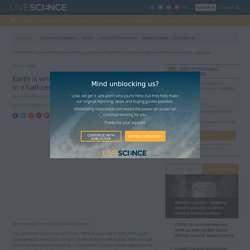
The 28 fastest days on record (since 1960) all occurred in 2020, with Earth completing its revolutions around its axis milliseconds quicker than average. That's not particularly alarming — the planet's rotation varies slightly all the time, driven by variations in atmospheric pressure, winds, ocean currents and the movement of the core. But it is inconvenient for international timekeepers, who use ultra-accurate atomic clocks to meter out the Coordinated Universal Time (UTC) by which everyone sets their clocks. When astronomical time, set by the time it takes the Earth to make one full rotation, deviates from UTC by more than 0.4 seconds, UTC gets an adjustment.
Until now, these adjustments have consisted of adding a "leap second" to the year at the end of June or December, bringing astronomical time and atomic time back in line.
7 Interesting Facts about Soviet-Russian Spacesuits. America is not the only nation that has ever had a space program.

In fact, the former-Soviet Union happened to be the first state ever to put a human being into space. But apart from the highly sophisticated technology needed to get humans into space, they also need to be kept alive (ideally) once up there. The Universe. Mars. Near Earth Objects. Rockets. Space Travel. Tesseract makes spacecraft propulsion smaller, greener, stronger.
Launch vehicles and their enormous rocket engines tend to receive the lion’s share of attention when it comes to space-related propulsion, but launch only takes you to the edge of space — and space is a big place.
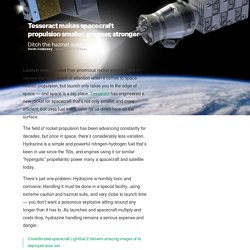
Tesseract has engineered a new rocket for spacecraft that’s not only smaller and more efficient, but uses fuel that’s safer for us down here on the surface. The field of rocket propulsion has been advancing constantly for decades, but once in space, there’s considerably less variation. Hydrazine is a simple and powerful nitrogen-hydrogen fuel that’s been in use since the ’50s, and engines using it (or similar “hypergolic” propellants) power many a spacecraft and satellite today. There’s just one problem: Hydrazine is horribly toxic and corrosive. Handling it must be done in a special facility, using extreme caution and hazmat suits, and very close to launch time — you don’t want a poisonous explosive sitting around any longer than it has to.
Star Trek Mars: NASA spots "Star Trek" Starfleet logo on Mars surface using Mars Reconnaissance Orbiter MRO. NASA's Mars Reconnaissance Orbiter (MRO) has spotted an unusual symbol on the surface of Mars — the iconic "Star Trek" Starfleet logo.
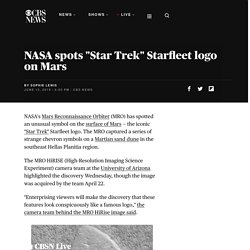
The MRO captured a series of strange chevron symbols on a Martian sand dune in the southeast Hellas Planitia region. The MRO HiRISE (High-Resolution Imaging Science Experiment) camera team at the University of Arizona highlighted the discovery Wednesday, though the image was acquired by the team April 22. "Enterprising viewers will make the discovery that these features look conspicuously like a famous logo," the camera team behind the MRO HiRise image said.
According to the team, the shapes on the red planet were created by wind, lava and dunes. They began as large, crescent-shaped dunes that were surrounded by lava after an eruption before solidifying. Our Closest Star May Have a Habitable Planet. They also have the greatest longevity, with lifespans that can last into the trillions of years.
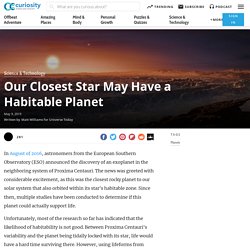
Last, but not least, they appear to be the most likely stars to host systems of rocky planets. This is attested to by the sheer number of rocky planets discovered around neighboring red dwarf stars in recent years — such as Proxima b, Ross 128b, LHS 1140b, Gliese 667Cc, GJ 536, the seven rocky planets orbiting TRAPPIST-1. NASA: Threat of Earth-destroying asteroid must be taken seriously. The head of NASA has warned that it is time to take the threat of an Earth-destroying asteroid seriously.
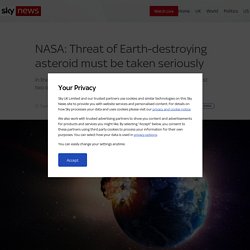
Jim Bridenstine spoke as the space agency began its planetary defence conference exercises, based around the hypothetical scenario of an asteroid impact. NASA's administrator expressed concern that similar warnings have historically prompted amusement and said that asteroid collisions were more common than people believed. In the planetary defence exercises this week, simulating a global response to an Earth-destroying meteorite, NASA's first step will be to precisely measure the object's speed and trajectory. NASA head warns: Expect a major asteroid impact in your lifetime.
NASA administrator Jim Bridenstine thinks it’s time to start taking the threat of an Earth-altering asteroid impact seriously.

In a speech today at the International Academy of Astronautics Planetary Defense Conference, Bridenstine opened his keynote with a warning about what’s to come. “We have to make sure that people understand that this is not about Hollywood, it’s not about movies,” he said. “This is about ultimately protecting the only planet we know, right now, to host life and that is the planet Earth.” This video file cannot be played. There Are Toxic Fungi in Space and No One Knows If They're Dangerous.
Potentially dangerous fungi are living on space stations and spacecraft right now — but we have no idea if they're harmful for astronauts and scientists need to do much more research to figure that out.
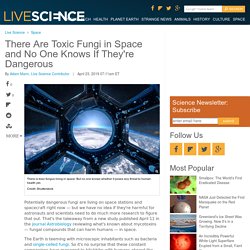
That's the takeaway from a new study published April 11 in the journal Astrobiology reviewing what's known about mycotoxins — fungal compounds that can harm humans — in space. The Earth is teeming with microscopic inhabitants such as bacteria and single-celled fungi. So it's no surprise that these constant companions have managed to hitchhike with humans aboard the International Space Station and other space-going vessels.
While scientists have done a fair amount of research on bacteria in space, fungi remain relatively understudied. Part of the reason is that these microbial mushroom cousins typically cause health problems only in people who live under stressful conditions or who have severely compromised immune systems. [6 Superbugs to Watch Out For] We now know why Israel’s lunar lander crashed into the Moon. After several days of delays and multiple false starts, SpaceX finally launched its Falcon Heavy rocket for just the second time ever.

First ever black hole image released. Image copyright EHT Astronomers have taken the first ever image of a black hole, which is located in a distant galaxy.

It measures 40 billion km across - three million times the size of the Earth - and has been described by scientists as "a monster". The black hole is 500 million trillion km away and was photographed by a network of eight telescopes across the world. Details have been published today in Astrophysical Journal Letters. Future of Spacecraft Propulsion: How Fast (and How Far) Could We Go? It’s one thing to let slip the surly bonds of Earth and venture that little bit further into the cosmic backyard. Space, as we often define it, is a short hundred miles up. A distance that astronauts and cosmonauts cover in minutes.
The ESA Is Launching a Mission to the Moon — of an Asteroid. "Didymoon's small size means we know little about it, but we assume it would be spin-locked around its parent like Earth's moon, implying a slower spin equal to its orbital period. The plan is to land at least one CubeSat there, although it will require precise navigation to achieve this. The asteroid will have something like one millionth of Earth's gravity, with an estimated escape velocity of just 6 cm per second, so one danger might be bouncing back out to space. " According to Patrick Michel, these tiny asteroids could also be targets for asteroid mining. While larger bodies are much rarer, small ones like Didymoon are much more plentiful, even though their rapid spin ratemight make mining them difficult. Virgin Galactic spaceplane reaches space with first passenger on board.
Tourism venture Virgin Galactic sent its spaceplane into space for the second time this morning, qualifying all three people on the flight for their commercial astronaut wings. One of those riders was Virgin Galactic’s first test passenger, Beth Moses, the chief astronaut instructor at Virgin Galactic, who flew along with the vehicle’s two pilots. She’s also Virgin Galactic’s first female flyer. Virgin Galactic’s spaceplane, the VSS Unity, is designed to take passengers to the edge of space where they can experience a few minutes of weightlessness. But up until the end of last year, the vehicle had yet to breach Earth’s atmosphere. That changed in December when Virgin Galactic made history by sending VSS Unity to a height of 51.4 miles (82.7 kilometers), an altitude that many (but not all) consider to be the start of space.
NASA IS GOING BACK TO THE MOON. Nasa calls time on silent Opportunity Mars rover. Image copyright NASA/JPL/Doug Ellison. When Worlds Collide: Scientists Spot Hint of a Giant Crash in Alien Solar System. Scientists peering at an alien solar system have spotted a pair of planets so different that their traits may be evidence of a massive collision. The key difference is in the planets' density — although the two neighboring planets are similar in size, one is more than twice as dense as the other.
The researchers who measured the density imbalance suggest that the stark difference was most likely caused by a giant impact that stripped away much of the less-dense mantle from one of the planets. The planets, which were first discovered in 2014, orbit a star called Kepler-107 with two other companions. Boeing's Astronaut Taxi Is a Go, Will Launch a Test Flight Next Month. Boeing had problems in the development of their spacecraft, the Starliner, when a propellant leak occurred during testing last year.
But now those problems have been overcome and the craft is ready for its first test flight, according to the company. Boeing was one of two private companies (along with SpaceX) that was contracted by NASA to ferry astronauts from Earth to the International Space Station (ISS). What Is the Future of Commercial Space Flight? Will China's moon landing launch a new space race? China became the third country to land a probe on the Moon on Jan. 2. New Horizons: Nasa probe survives flyby of Ultima Thule. A blockchain firm bought asteroid mining company Planetary Resources. Here’s a match made in…I don’t know, somewhere on the blockchain, I guess.
Pioneering space startup Planetary Resources was acquired by, of all things, a blockchain firm this week. How will NASA transform by joining forces with private space travel? How will NASA transform by joining forces with private space travel? There’s now a giant net collecting garbage in space and it’s as cool as it sounds. NASA asteroid WARNING: Asteroid bigger than Colosseum to skim Earth TOMORROW.
The giant asteroid will skim the planet after midnight on the morning of Friday, August 24, about 12.44am UT. Asteroid 2018 PR9 will make a so-called “close Earth approach” tomorrow, skimming the Earth close enough for NASA to take notice. The asteroid is currently barreling towards the planet at incredible top speeds of 31,384mph or 14.03 kilometres per second. WATCH: Scotland chosen for UK's first spaceport. Liquid water 'lake' revealed on Mars.
Image copyright Science Photo Library Researchers have found evidence of an existing body of liquid water on Mars. Aerospace startup Rocket Lab says it’s going to build a second launch site in the US.
UFO's & UAP's.